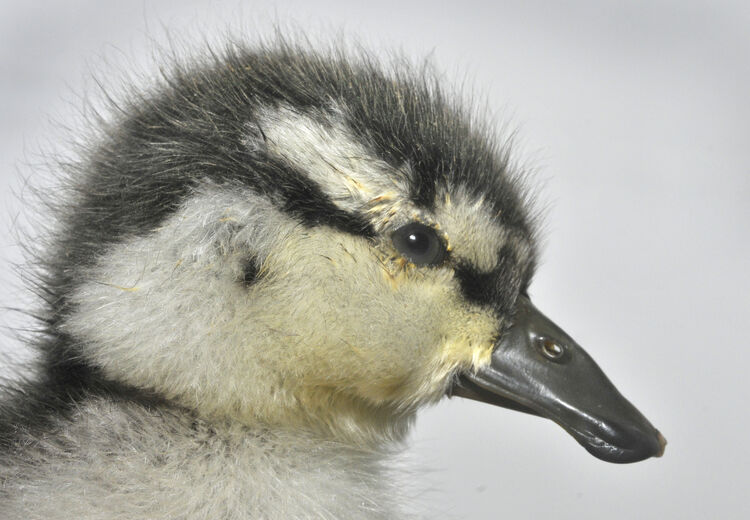Blue Duck
Common name(s) Blue duck/Whio
Scientific name Hymenolaimus malacorhynchos
Threat classification Threatened- nationally vulnerable
Species profile
The blue duck/whio is found on clean, fast-flowing mountain rivers on both the North and South Islands. They are well adapted to this environment as they are strong swimmers and possess a unique fleshy bill flap which enables them to scrape aquatic invertebrates off rocks.
They are charismatic birds which defend their territory vigorously. Despite this, their population is declining and consists of only around 2000-3000 birds (2020).
Distribution
There are two sub species of whio, with the South Island sub species being larger and lighter in colour than their North Island relatives.
In the South Island the birds are found throughout the West Coast stretching from Kahurangi National Park down to Fiordland whereas on the North Island they inhabit rivers in more central locations such as the Tongariro area and Te Urewera National Park.
Challenges
Whio are the most labour intensive species held at ICWT. All ducklings are hand-reared and very messy from hatch onwards. While adults are generally hardy, ducklings pick up parasites easily so they need to be managed intensively to ensure they thrive.
The biggest challenge to the wild populations is protecting them from introduced mammalian predators. Whio have quite a strong scent, which can give away their location easily. Females are especially vulnerable while nesting and trials have shown that installing trap lines along the river banks increases duckling survival. This challenge is ongoing as many areas where whio are found are not easily accessible by foot, which makes them difficult to protect.
ICWT contribution to breeding programme
ICWT plays a major role in the recovery programme for whio. As well as holding a number of captive pairs we collaborate with other captive facilities and play a crucial role in hand-rearing and hardening birds bred throughout the South Island. Additionally we incubate and hatch eggs brought in from the wild to either form new captive pairs, or be released back onto their home rivers once they are fully grown.
The Trust has been involved in the whio recovery programme since the early 1990’s. Up until 2017 only the North Island sub species was bred in captivity. From 2017 onwards a South Island whio breeding programme was established and all South Island facilities including the Trust now exclusively breed the local sub species.
Future Aspirations
To continue the support of the recovery programme, the build of a special breeding aviary was started to increase holding capacity for South Island whio pairs.
Partnerships
- Department Of Conservation – Species management
- Air New Zealand – Transportation
- Whio Forever – Advocacy and funding
- Wildbase – Veterinary Advice
- Orana Wildlife Park – Captive Breeding Facility
- Kiwi Birdlife Park - Captive Breeding Facility
- Willowbank Wildlife Reserve - Captive Breeding Facility





